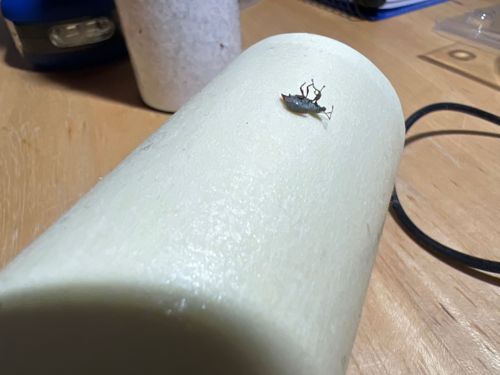Weevil (Broad-nosed weevil or similar)
Scientific Name: Curculionidae (likely a broad-nosed species within)
Order & Family: Order: Coleoptera, Family: Curculionidae
Size: Typically "0.1 to 1.5 inches" (3 to 40 mm), with many common species in the "0.2 to 0.6 inch" (5 to 15 mm) range. The pictured specimen appears to be on the smaller side.

Natural Habitat
Found in various environments depending on the species, including gardens, agricultural fields, forests, and sometimes indoors, feeding on plants or stored products. The specific species determines habitat preference.
Diet & Feeding
Mostly herbivorous, feeding on plant material. Diet varies greatly by species, ranging from roots, stems, leaves, and fruits to seeds and nuts. Some are highly specific feeders on a single plant species, while others are generalists.
Behavior Patterns
Weevils are generally slow-moving insects. Many species play dead or drop to the ground when disturbed. They undergo complete metamorphosis (egg, larva, pupa, adult). Adults often feed on foliage, while larvae typically feed inside plant tissues like stems, roots, or seeds.
Risks & Benefits
Risks: Many species are significant agricultural pests, causing damage to crops (e.g., cotton boll weevil, granary weevil, rice weevil). Infestations can spread rapidly and lead to economic losses. Benefits: Some species are used in biological control programs to manage invasive weeds. They also play a role in decomposition and nutrient cycling.
Identified on: 9/24/2025